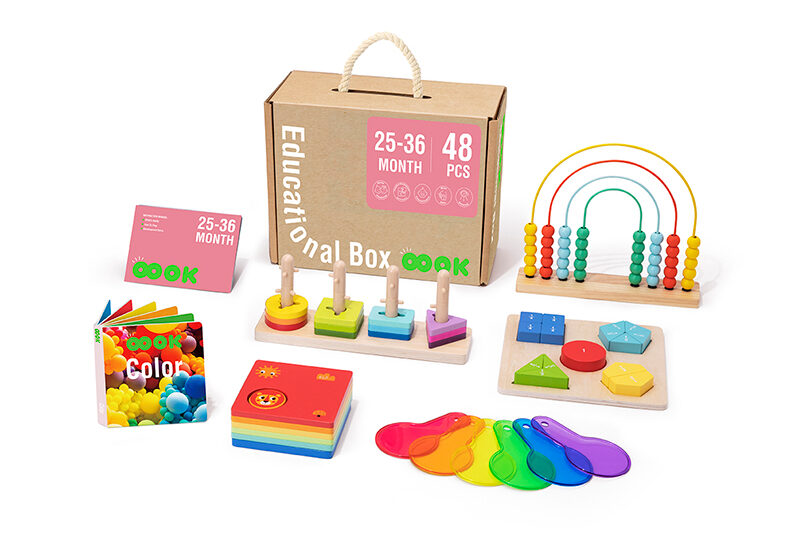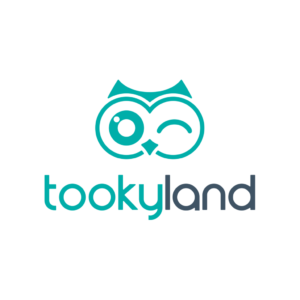By definition, a Montessori toy is typically one made of natural materials like wood or fabric, designed to encourage kids to explore and discover independently. So, instead of going for tricked out toys that move and make sounds on their own, these are passive toys that require your child to physically manipulate them and incorporate them into their pretend play.

1. Introduction
A. Background on Montessori education and its principles
Montessori education is a child-centered educational approach that was developed by Italian physician and educator Maria Montessori in the late 19th and early 20th centuries. Montessori believed that children are naturally curious and driven to learn, and that they learn best through hands-on experiences and exploration.
The key principles of Montessori education include:
Respect for the child: Montessori education values the unique strengths and potential of each individual child, and seeks to create a supportive learning environment that meets their individual needs and interests.
Hands-on learning: Montessori education emphasizes hands-on exploration and discovery as a way for children to learn about their world and develop key skills.
Development of independence: Montessori education encourages children to take initiative and make choices for themselves, fostering independence, self-confidence, and a sense of responsibility.
Mixed age classrooms: Montessori classrooms often consist of children of different ages and abilities, allowing for peer learning and collaboration.
Preparation of the environment: The Montessori classroom is designed to be a carefully prepared environment that supports the child’s growth and development, with materials and activities that are developmentally appropriate and accessible to the child.
Observation and documentation: Montessori teachers use observation and documentation to understand each child’s individual needs and abilities, and to tailor the learning environment and experiences to meet those needs.
These principles form the foundation of Montessori education and shape the way that Montessori schools and teachers approach learning and teaching. I hope this gives you a good overview of the background and principles of Montessori education!
B. Explanation of Montessori wooden toys
Montessori wooden toys are a type of educational toy that are designed and used in the Montessori method of education. This approach was developed by Dr. Maria Montessori, an Italian physician and educator, in the late 19th and early 20th centuries.
Montessori toys are usually made of natural materials, such as wood, and are designed to be simple, practical, and appealing to a child’s sense of touch, sight, and sound. They are meant to encourage children to explore, learn, and develop their skills in a self-directed way, rather than through direct instruction.
Examples of Montessori wooden toys include blocks, puzzles, geometric shapes, sorting and matching games, and sensory materials like bells, and balls. These toys typically have smooth surfaces, bright colors, and interesting textures, and they are designed to engage a child’s imagination and creativity.
The purpose of Montessori toys is to support a child’s natural development and to help them learn through hands-on experiences. They are considered an important part of the Montessori approach, which emphasizes self-discovery, exploration, and independent learning.

C. The importance of play and educational toys in child development
Play is an essential component of childhood and plays a critical role in a child’s development. Here are a few key ways in which play and educational toys can support child development:
Cognitive development: Play and educational toys can help children develop their problem-solving, critical thinking, and creativity skills. For example, building blocks, puzzles, and other construction toys can help children develop their spatial reasoning and problem-solving abilities.
Physical development: Play can support children’s physical development by helping them build strength, coordination, and fine motor skills. For example, riding toys, sports equipment, and outdoor play can help children develop their gross motor skills, while educational toys that require hand-eye coordination and dexterity can help build fine motor skills.
Social and emotional development: Play can provide children with opportunities to practice and develop social skills, such as cooperation, communication, and empathy. For example, playing with dolls, action figures, and other role-playing toys can help children practice and develop their social skills.
Language development: Play and educational toys can also help children develop their language skills by providing them with opportunities to hear and practice using new words and concepts. For example, educational toys that focus on letter and number recognition can help children build their early literacy and numeracy skills.
Creativity and imagination: Play can also provide children with opportunities to express themselves creatively and to use their imaginations. For example, playing with open-ended toys like play dough, blocks, and costumes can help children be creative and imaginative.
In conclusion, play and educational toys are essential components of childhood that can help support children’s development in a variety of ways. When choosing toys and play materials, it is important to consider the child’s age, abilities, and interests, as well as the educational value of the toy or material.
2. The History and Philosophy of Montessori Education

A. The life and work of Maria Montessori
Maria Montessori was born in Italy in 1870 and became the first female physician in Italy in 1896. She was inspired to pursue a career in education after working with children with disabilities, and she went on to develop the Montessori method of education.
Montessori believed that all children have a natural drive to learn, and that the role of the teacher is to create an environment that supports and nurtures this drive. She believed that children learn best through hands-on experiences and exploration, and that they are capable of self-directed learning.
In 1907, Montessori opened the first Montessori school in Rome, and her innovative approach to education quickly gained attention. Montessori schools soon spread around the world, and the Montessori method of education is now used in thousands of schools in over 100 countries.
In addition to her work as an educator, Montessori was also a prolific writer and speaker, and she wrote many books and articles about her educational philosophy and methods. Some of her most famous works include “The Montessori Method” and “The Child in the Family.”
Throughout her life, Montessori was dedicated to improving the lives of children and to creating a better world for future generations. Her work has had a lasting impact on the field of education and continues to inspire educators and parents around the world.
B. Key principles of Montessori education.
Respect for the child: Montessori believed that all children should be respected and valued for who they are, and that the role of the teacher is to create an environment that supports their individual needs and interests. This means that teachers use a child-centered approach that is responsive to each child’s unique needs and abilities.
Hands-on learning: Montessori believed that children learn best through hands-on experiences and exploration, and that they are capable of self-directed learning. This means that teachers provide children with a wide range of materials and activities that encourage hands-on exploration and experimentation.
Development of independence: Montessori believed that children should be encouraged to develop independence and self-reliance, and that they should be given the opportunity to make their own choices and decisions. This means that teachers provide children with opportunities to work on their own, to make their own decisions about what to learn and how to learn it, and to take responsibility for their own learning.
Preparation of the environment: Montessori believed that the environment plays a critical role in supporting children’s development, and that it should be prepared in a way that is attractive, accessible, and designed to support children’s learning and growth. This means that the classroom is organized in a way that makes it easy for children to find and use materials, and that it is designed to promote hands-on exploration and experimentation.
Mixed -age groupings: Montessori believed that children of different ages should be taught together, as this can promote learning and socialization. This means that children of different ages are often grouped together in the classroom, and that they are encouraged to learn from each other and to help each other.
Emphasis on the process, not just the product: Montessori believed that the process of learning is just as important as the outcome, and that children should be encouraged to enjoy the process of discovery and exploration. This means that teachers focus on the process of learning, and not just the final product, and that they encourage children to take their time, to make mistakes, and to learn from their experiences.

C. The role of play in Montessori education
Play is a very important aspect of Montessori education, as it is seen as a crucial tool for promoting children’s development and learning.
In Montessori, play is not just seen as a leisure activity, but as a vital means of exploring the world and developing new skills and knowledge. Children are encouraged to engage in play that is meaningful and purposeful, and that helps them to develop their physical, social, emotional, and cognitive abilities.
For example, through play, children can learn about cause and effect, develop their problem-solving skills, practice their motor skills, and build their confidence and self-esteem. Play can also help children to develop their social skills, as they learn to communicate and cooperate with others, and to express their emotions and feelings.
In the Montessori classroom, play is often integrated into the curriculum through the use of materials and activities that are designed to be both educational and enjoyable. For example, children might play with puzzles, blocks, or manipulatives that help them to develop their fine motor skills and hand-eye coordination. They might also engage in role-playing activities that help them to develop their social skills and imagination.
D. The Development of Montessori Wooden Toys
In the decades since Montessori first introduced her educational approach and materials, Montessori wooden toys have evolved and become increasingly sophisticated. Today, there are many different types of Montessori wooden toys available, ranging from simple blocks and puzzles to more complex building sets and educational games. These toys are designed to promote cognitive development, encourage problem-solving and critical thinking, and provide hands-on learning experiences for children of all ages.
While the design and materials of Montessori wooden toys have changed over the years, their fundamental purpose has remained the same: to provide children with opportunities to learn and grow through hands-on exploration and play. And as more and more research supports the effectiveness of the Montessori approach, Montessori wooden toys continue to be a popular and widely-used educational tool.
The suitable age for kids to have Montessori education
Montessori education is designed for children from birth to age 6, with the primary focus being on the development of children in the 0-3 year age range. This period is known as the “absorbent mind” stage, where children are like sponges and soak up information and experiences from their environment.
However, Montessori education can be adapted for children up to the age of 18, and there are Montessori programs for older children, including elementary, middle and high school levels.
Overall, in Montessori education, play is seen as a critical component of children’s development and learning, and as a way to help them to discover and explore the world around them.
3. Benefits of Montessori Wooden Toys for Children

Montessori wooden toys, are designed to meet specific developmental needs of children and promote self-directed learning. There are many different kinds of Montessori wooden toys, but some of the most common categories include:
Sensorial Materials: These toys are designed to help children develop and refine their senses, such as touch, smell, taste, and hearing. Examples include sorting and grading materials, smell bottles, and sound boxes.
Practical Life Materials: These toys aim to help children develop life skills, such as pouring, transferring, and cleaning. Examples include toy kitchens, washing and ironing sets, and sweeping and dusting materials.
Math Materials: These toys are designed to help children learn basic mathematical concepts, such as counting, adding, and subtracting. Examples include number rods, sandpaper numbers, and the decimal system.
Language Materials: These toys aim to help children develop their language skills, including reading, writing, and speaking. Examples include movable alphabet, sound boxes, and word building materials.
Cultural Materials: These toys aim to help children learn about the world around them, including geography, science, and history. Examples include continent maps, nomenclature cards, and materials for botany and zoology studies.
These are some of the most common types of Montessori wooden toys, but there are many more materials available that cater to a wide range of developmental needs and interests.

Montessori wooden toys can have a number of benefits for children, as they align well with the principles of Montessori education. Some of these benefits include:
Hands-on learning: Montessori wooden toys are often designed to be hands-on and interactive, which can help to engage children and encourage hands-on exploration and experimentation. This can help to promote learning, as children use their senses and physical movements to understand and interact with the world around them.
Development of fine motor skills: Montessori wooden toys often require children to use their hands and fingers to manipulate and move parts, which can help to develop their fine motor skills and hand-eye coordination. This can be especially beneficial for younger children, who are still developing these important skills.
Encouragement of creativity and imagination: Montessori wooden toys often provide opportunities for children to use their imagination and creativity, as they play and explore. For example, blocks can be used to build structures, and toy animals can be used to act out stories and scenarios.
Sustainability and safety: Montessori wooden toys are often made from natural, sustainable materials, and are designed to be safe and non-toxic. This can provide a more environmentally-friendly and safe option for children to play with, compared to toys made from plastic or other synthetic materials.
Durability: Montessori wooden toys are often designed to be durable and long-lasting, which can help to promote value and reduce waste. This also means that they can be passed down from generation to generation, helping to foster a connection to the past and to promote a sense of tradition.
Montessori wooden toys often provide open-ended play opportunities, meaning that children can play with them in a variety of ways and use their imagination to come up with new ideas and scenarios. This can help to promote creativity and imagination, as well as encourage children to think critically and problem-solve.
There have been some studies conducted on the long-term effects of Montessori education, and the results have been generally positive. According to these studies, individuals who received a Montessori education as children tend to display strong academic skills, creativity, independence, and a lifelong love of learning.
In terms of specific skills, Montessori-educated individuals often perform well in subjects such as mathematics, science, and language. They also tend to have well-developed problem-solving and critical thinking abilities. Additionally, Montessori education places a strong emphasis on independence and self-motivation, which can lead to individuals who are highly self-directed and capable of setting and achieving personal goals.
4. Characteristics of Montessori Wooden Toys

Montessori wooden toys are known for their distinctive characteristics that make them well-suited to the principles of Montessori education. Some of these characteristics include:
A. Natural materials
Montessori wooden toys are often made from natural materials such as wood, cloth, and silk. These materials are non-toxic, sustainable, and safe for children to play with, and can help to promote a connection to the natural world.
B. Hands-on and interactive
Montessori wooden toys are designed to be hands-on and interactive, with moving parts and pieces that children can manipulate and explore. This can help to promote hands-on learning and experimentation, as children use their senses and physical movements to understand the world around them.
C. Multi-functional
Montessori wooden toys are often designed to be multi-functional, meaning that they can be used in a variety of ways and for a variety of purposes. For example, blocks can be used to build structures, while toy animals can be used to act out stories and scenarios.
D.Open-ended play: Montessori wooden toys often provide open-ended play opportunities, meaning that children can play with them in a variety of ways and use their imagination to come up with new ideas and scenarios. This can help to promote creativity and imagination, as well as encourage children to think critically and problem-solve.Durable and long-lasting.
Montessori wooden toys are often designed to be durable and long-lasting, which can help to promote value and reduce waste. This also means that they can be passed down from generation to generation, helping to foster a connection to the past and to promote a sense of tradition.
Focus on the process, not the outcome: Montessori wooden toys are often designed to promote a focus on the learning process, rather than just the end result. For example, a child working with blocks may focus on the process of building, rather than just the end result of the structure they create. This can help to foster a love of learning and encourage children to enjoy the journey of discovery.

Montessori wooden toys are characterized by their use of natural materials, simple and straightforward design, hands-on and interactive nature, multi-functional capabilities, open-ended play opportunities, durability, and focus on the process of learning. These characteristics make Montessori wooden toys an ideal tool for promoting hands-on, experiential learning in a safe, sustainable, and engaging way.
5. Tooky Toy’s Montessori Wooden Toys
Tooky Toy is a company that produces wooden toys for children for over 19 years since year 2005. These years, following the market requirement, Tooky Toy’s design team designs many toys to support the Montessori educational approach, which emphasizes hands-on learning and the development of a child’s natural curiosity and creativity.
Tooky Toy offers a wide range of Montessori wooden toys, including blocks, puzzles, stacking toys, and educational games. Most of these toys are made from natural, eco-friendly materials such as wood, and are designed to be durable and long-lasting.
The Montessori wooden toys produced by Tooky Toy are intended to help children develop important skills such as fine motor skills, hand-eye coordination, problem-solving, and critical thinking. They are also designed to be engaging and fun, encouraging children to explore and learn in their own way.
Whether you’re a parent looking for educational toys for your child, a teacher looking for Montessori materials for your classroom, or an educational professional seeking high-quality Montessori products, Tooky Toy has a range of Montessori wooden toys that can meet your needs.
6. How to Build a Montessori Corner at home with Your recent toys
Montessori toy corners are an excellent way to encourage children’s natural curiosity and creativity while also providing them with a sense of order and structure. By creating a dedicated play space that is well-organized and thoughtfully stocked with toys, you can help your child develop essential skills, including independence, problem-solving, and self-discipline.
Here are the steps to create a Montessori toy corner in your home:
Choose a suitable space: The first step in building a Montessori toy corner is to choose a space that is easily accessible to your child. A corner of the living room, a nook in the playroom, or even a small table in your child’s bedroom can work. The space should be well-lit and free from distractions, so your child can focus on the toys and activities.
Gather your toys: Montessori toys are designed to be hands-on and interactive, so choose toys that your child can manipulate and explore on their own. Some of the latest Montessori toys include:
Wooden blocks: Wooden blocks are a classic Montessori toy that encourage imaginative play and help children develop their fine motor skills.

Sensory bins: Sensory bins are filled with materials like rice, beans, or sand that your child can explore with their hands. These toys are great for developing sensory awareness and problem-solving skills.
Puzzles: Puzzles come in a variety of sizes and levels of difficulty, making them perfect for children of all ages. They are an excellent way to help children develop problem-solving and critical thinking skills.
Manipulative toys: Manipulative toys, like pegboards, lacing cards, and stacking blocks, are great for developing fine motor skills and hand-eye coordination.
Organize the space: Once you have gathered your toys, it’s time to organize the space. Montessori toy corners are designed to be orderly, with each toy having its own designated space. This helps children know where everything is and makes clean up easier. You can use baskets, shelves, or cubes to store the toys.
Create a routine: Establishing a routine for playing with the Montessori toy corner will help your child feel more secure and confident in their play. Encourage your child to take breaks when they are finished with a toy and to clean up before moving on to the next activity.
In conclusion, building a Montessori toy corner at home is a fun and rewarding project that can provide your child with a safe and stimulating environment for play and learning. By carefully selecting toys, organizing the space, and establishing a routine, you can help your child develop essential skills and foster a lifelong love of learning.
The End about Tooky
Tooky is a leading 18 years wooden toy supplier based in China. Below is our main 7 values. If you are interested in importing wooden toys, feel free to CONTACT us.
1) Products-Over 500 fine selected products + over 40 quarterly new launches.
2) Free customized designs-9 experienced product managers, they will convert toy into with your brand characteristics
3) Customized package-4 packaging experts offer not only safe package, but legal labeling for market access
4) Test report-Not sure of testing standards? You can leave test with us till we get a final “pass” report as market requires
5) Lifestyle pictures-Never feel helpless about marketing! Will offer you lifestyle pictures if you need
6) Short videos-Check with our sales for “Short Video Paid-Service & Discount Program”
7) Exclusivity program-After spending a tremendous amount of resources on marketing and advertising, we may see competitors sharing our fruits of labor by carrying very similar products. How to obtain some kind of protections? An “exclusivity program” needed to be put in place, check with our sales.
Any comments, pls contact with me sales21@trade-internet.com











3 回复
Thanks for sharing. I read many of your blog posts, cool, your blog is very good.
Thanks for sharing. I read many of your blog posts, cool, your blog is very good.
Thank you for your sharing. I am worried that I lack creative ideas. It is your article that makes me full of hope. Thank you. But, I have a question, can you help me?